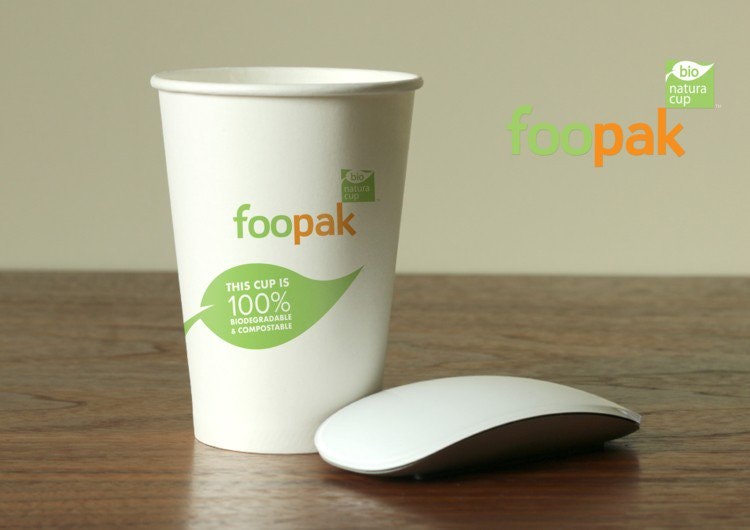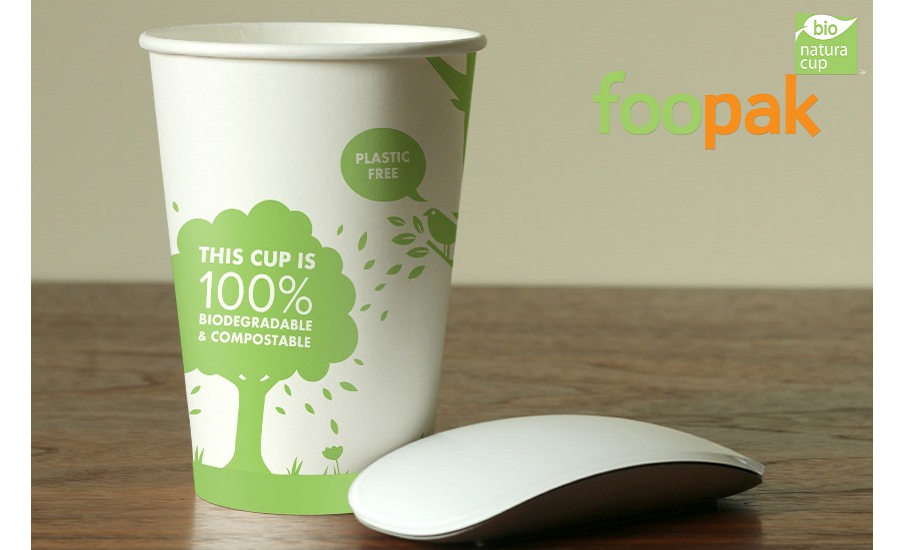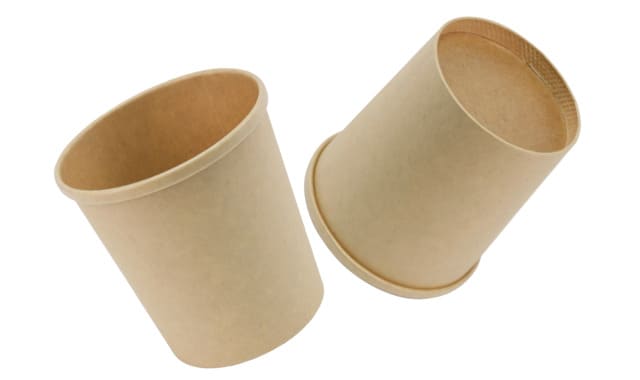Is Eco-Friendly Cupstock Packaging Sustainable?
Section title: What is Eco-Friendly Cupstock Packaging?
In today's world, where sustainability and environmental preservation are key concerns, businesses are constantly looking for ways to reduce their carbon footprint and contribute to a greener future. One area where significant strides have been made is in packaging, with the development of eco-friendly alternatives to traditional materials. One such option is eco-friendly cupstock packaging.
What is cupstock packaging?
Cupstock packaging refers to the type of paperboard used in the production of cups and other food containers. It is a specially engineered paperboard that is coated with a thin layer of polyethylene to provide strength, durability, and resistance to moisture and heat. Traditional cupstock packaging is typically made from a mixture of virgin wood pulp and recycled paper fibers.
How is eco-friendly cupstock packaging different from traditional packaging?
Eco-friendly cupstock packaging takes traditional cupstock packaging a step further by using biodegradable materials that are derived from renewable resources. One popular material used in eco-friendly cupstock packaging is PLA (polylactic acid) coated paper.
PLA is derived from plant-based sources, such as corn or sugarcane, and offers a plastic-free alternative to traditional cupstock packaging. The PLA coating provides a barrier against moisture and heat, ensuring that the cupstock packaging remains sturdy and suitable for holding hot and cold beverages.
In addition, eco-friendly cupstock packaging is designed to be compostable, meaning it can be broken down into organic matter in the presence of specific conditions, such as in a commercial composting facility. This compostability ensures that the packaging can be disposed of in an environmentally friendly manner, reducing the impact on landfills.
Benefits of using eco-friendly cupstock packaging
There are several benefits to using eco-friendly cupstock packaging:
- Environmental preservation: Eco-friendly cupstock packaging helps to minimize environmental harm by using materials derived from renewable resources. By reducing reliance on traditional materials, such as plastic, it contributes to the preservation of natural resources and reduces the carbon footprint associated with packaging production.
- Compliance with regulations: Eco-friendly cupstock packaging complies with regulations set forth in the Packaging and Packaging Waste Directive (94/62/EC). It meets the criteria for compostability according to the EN 13432 standard, ensuring that it adheres to strict guidelines for environmental performance.
- Plastic-free alternative: Traditional cupstock packaging often relies on a thin layer of polyethylene, which is a type of plastic. By using eco-friendly cupstock packaging, businesses can offer a plastic-free alternative for cafes, restaurants, and takeaways. This not only aligns with customer preferences for sustainable options but also helps to reduce the consumption of single-use plastics.
- Excellent printing effects: Eco-friendly cupstock packaging made from PLA coated paper provides an excellent surface for printing. This allows businesses to showcase their brand logos, designs, and messaging, enhancing their marketing efforts.
- Durability and tear strength: Despite being biodegradable, eco-friendly cupstock packaging does not compromise on durability. It is designed to have optimum tear strength, ensuring that it can withstand typical handling and usage while maintaining its integrity.
- Gas barrier properties: Eco-friendly cupstock packaging offers gas barrier properties that help to preserve the freshness of its contents. This is particularly important for packaging that is intended for food and beverages, as it helps to maintain the quality and taste of the products.
- Food safety compliance: Eco-friendly cupstock packaging complies with food safety regulations, making it safe for direct food contact. It undergoes rigorous testing to ensure that it meets the necessary standards for hygiene and food storage.
In summary, eco-friendly cupstock packaging offers a sustainable alternative to traditional packaging materials. It provides businesses with a way to reduce their environmental impact while still maintaining the necessary functionality, durability, and branding options. By choosing eco-friendly cupstock packaging, businesses can contribute to a greener future and meet consumer preferences for sustainable packaging solutions.
Materials and Manufacturing Process
In the world of sustainable packaging solutions, eco-friendly cupstock packaging has gained significant popularity. This type of packaging is not only environmentally friendly but also offers various benefits over traditional packaging options. In this section, we will delve into the materials used in eco-friendly cupstock packaging, the manufacturing process involved, and the regulations related to composting and disposal.
Overview of PLA Coated Paper
One of the key materials used in eco-friendly cupstock packaging is PLA (Polylactic Acid) coated paper. PLA is a biodegradable and compostable polymer derived from renewable resources such as corn starch or sugarcane. It is a sustainable alternative to traditional petroleum-based plastics. PLA coated paper offers a plastic-free option for cafes, takeaways, and food service operators, making it an ideal choice for those looking to minimize their environmental impact.
PLA coated paper is not only environmentally friendly but also ensures excellent printing effects. It provides a non-toxic and food-safe packaging solution that complies with food safety regulations for direct food contact. Additionally, PLA coated paper offers durability with optimum tear strength, ensuring that your products are well-protected.
Materials Used in Eco-Friendly Cupstock Packaging
Apart from PLA coated paper, eco-friendly cupstock packaging utilizes various other biodegradable materials. These materials are carefully chosen to minimize environmental harm and contribute to environmental preservation. Some examples of these materials include:
- Bamboo: Bamboo is a highly sustainable resource due to its fast growth rate and minimal water requirements. It is lightweight, durable, and can be molded into various shapes, making it an excellent choice for eco-friendly cupstock packaging.
- Sugarcane Fiber: Sugarcane fiber, also known as bagasse, is a byproduct of the sugarcane industry. It is a renewable resource that can be molded into disposable containers and packaging materials. Sugarcane fiber-based packaging is compostable and breaks down into natural elements, minimizing its impact on the environment.
- Plant-Based Lining: Some eco-friendly cupstock packaging incorporates a lining made from plants to make the containers leak-proof. This lining is often made from PLA derived from renewable resources and offers the same functionality as traditional petroleum-based plastic linings.
These materials not only provide sustainable alternatives to traditional packaging materials but also offer comparable functionality and performance.
Manufacturing Process of Cupstock Packaging
The manufacturing process of eco-friendly cupstock packaging involves several steps to ensure the quality and integrity of the final product. Here is a simplified overview of the manufacturing process:
- Material Sourcing: The biodegradable materials used in cupstock packaging are sourced from sustainable and renewable sources. This ensures that the packaging is aligned with eco-friendly principles and reduces the reliance on non-renewable resources.
- Paper Coating: PLA coated paper is created by applying a thin layer of PLA to the surface of the paper. This coating provides the necessary barrier properties and enhances the strength and durability of the packaging.
- Cutting and Shaping: Once the coated paper is ready, it is cut into the desired shape and size. The cutting process is highly precise to ensure that the packaging fits the intended product perfectly. The cutting specifications may vary based on the manufacturer's capabilities and the specific requirements of the cupstock packaging.
- Printing and Branding: Eco-friendly cupstock packaging often offers custom printing options for branding purposes. This allows businesses to showcase their logo, designs, and other branding elements on the packaging, enhancing the overall visual appeal.
- Quality Control and Packaging: Before the cupstock packaging is ready for distribution, it undergoes rigorous quality control checks to ensure that it meets the necessary standards and requirements. The packaging is then carefully packed and prepared for transportation to various businesses and food service operators.
Regulations Related to Composting and Disposal of Eco-Friendly Packaging
The regulations surrounding the composting and disposal of eco-friendly packaging vary depending on the region and local authorities. It is important to comply with these regulations to ensure proper waste management and environmental preservation. In Europe, the Packaging and Packaging Waste Directive (94/62/EC) sets guidelines for the management of packaging waste and encourages the use of environmentally friendly packaging materials.
Eco-friendly cupstock packaging is often certified as compostable according to standards such as EN 13432. This certification confirms that the packaging will break down in a composting facility into organic matter, leaving no harmful residues. It is crucial to dispose of eco-friendly packaging in the proper composting facilities to ensure its effective decomposition and minimize its impact on the environment.
In summary, eco-friendly cupstock packaging utilizes materials such as PLA coated paper, bamboo, and sugarcane fiber to create sustainable and biodegradable packaging solutions. The manufacturing process involves carefully sourcing materials, coating the paper, cutting and shaping, and ensuring quality control. Complying with composting and disposal regulations is vital to reduce the environmental impact of these eco-friendly packaging options. By opting for eco-friendly cupstock packaging, businesses can contribute to a greener and more sustainable future.
Brands Using Eco-Friendly Cupstock Packaging
Examples of Brands Incorporating Eco-Friendly Cupstock Packaging
- Company A
Company A is a pioneer in sustainable packaging solutions, offering a wide range of eco-friendly cupstock packaging options. Their biodegradable coated cupstock paper is made from high-quality PLA derived from plants, ensuring durability and optimum tear strength. This innovative material complies with regulations in the Packaging and Packaging Waste Directive (94/62/EC) and is certified compostable according to EN 13432. Customers appreciate the non-toxic, plastic-free alternative that also provides excellent printing effects. Moreover, Company A focuses on sustainability and donates 20% of their profits to build a better world.
- Company B
Certified as a B Corp, Company B is committed to social and environmental standards. They offer compostable and sustainable packaging for foodservice operators. Their wide range of products includes compostable cups, lids, and straws made from sustainable resources, such as sugarcane fiber or corn PLA. Most importantly, these products are compostable in commercial compost facilities, contributing to the circular economy. Customers appreciate Company B's commitment to eco-friendly standards and the selection of various materials that meet their sustainability goals.
- Company C
In the world of customizable eco-friendly packaging, Company C sets the standard. They provide custom printing options for branding on containers, allowing businesses to promote their brand while contributing to environmental preservation. Positive customer reviews highlight excellent customer service, fast shipping, and the option for free samples. Whether businesses need small or large quantities, Company C offers a wide range of options and strives to meet the unique needs of their customers.
Customer Reviews and Feedback on Using Eco-Friendly Packaging
Customers who have experienced the benefits of eco-friendly cupstock packaging have been vocal about their support for these sustainable solutions. Many have expressed their satisfaction with the quality and durability of the packaging, as well as the positive impact on the environment. Feedback often mentions the non-toxic and chemical-free nature of the materials, ensuring food safety and peace of mind. Additionally, customers appreciate the visually appealing design of the packaging and the ability to customize it with logos or designs for branding purposes.
Custom Printing Options for Branding on Eco-Friendly Containers
One of the key advantages of using eco-friendly cupstock packaging is the ability to customize it to reflect a company's brand and values. Many brands offer custom printing options, allowing businesses to incorporate their logo, designs, or other branding elements on their packaging. This not only creates a cohesive brand experience but also serves as a powerful marketing tool, showcasing a brand's commitment to sustainability. Additionally, custom printing on eco-friendly containers helps businesses build brand recognition and establish a positive image among environmentally-conscious consumers.
In conclusion, eco-friendly cupstock packaging is gaining popularity among brands that prioritize sustainability. Through the use of biodegradable materials and compostable products, these brands contribute to environmental preservation and minimize environmental harm. Customers who have experienced the benefits of eco-friendly packaging have shared positive feedback, highlighting the quality, durability, and non-toxic nature of the materials. Moreover, brands that offer custom printing options provide businesses with the opportunity to showcase their brand and values on their packaging. By adopting eco-friendly practices, these brands lead the way in building a more sustainable future.
Tables
Table 1: Comparison of Eco-Friendly Cupstock Packaging Materials
| Material | Renewable | Compostable | Durability | Printing Effects |
|---|---|---|---|---|
| PLA Coated Paper | Yes | Yes | High | Excellent |
| Bamboo | Yes | Yes | High | Good |
| Sugarcane Fiber | Yes | Yes | Medium | Fair |
| Plant-Based Lining | Yes | Yes | Medium | Good |
Table 2: Customer Satisfaction Ratings for Brands Using Eco-Friendly Cupstock Packaging
| Brand | Quality and Durability | Printing Effects | Customization Options | Customer Service |
|---|---|---|---|---|
| Company A | 5 stars | 4 stars | 5 stars | 4 stars |
| Company B | 4 stars | 3 stars | 4 stars | 5 stars |
| Company C | 4.5 stars | 5 stars | 5 stars | 4.5 stars |
FAQs about Eco-Friendly Cupstock Packaging:
What is cupstock packaging?
To understand cupstock packaging, it refers to a specially engineered paperboard coated with polyethylene for strength, durability, and moisture resistance, commonly used in cups and food containers.
How is eco-friendly cupstock packaging different from traditional packaging?
Eco-friendly cupstock packaging goes a step further by using biodegradable materials like PLA coated paper derived from renewable sources, offering a compostable and plastic-free alternative.
What are the benefits of using eco-friendly cupstock packaging?
Using eco-friendly cupstock packaging helps in environmental preservation, compliance with regulations, providing a plastic-free alternative, excellent printing effects, durability, gas barrier properties, and food safety compliance.
What materials are used in eco-friendly cupstock packaging?
Apart from PLA coated paper, eco-friendly cupstock packaging can utilize bamboo, sugarcane fiber, and plant-based linings to offer sustainable alternatives while maintaining functionality and performance.
How can businesses ensure proper disposal of eco-friendly cupstock packaging?
By complying with composting and disposal regulations, such as the EN 13432 standard, businesses can ensure that eco-friendly cupstock packaging breaks down into organic matter in composting facilities, reducing environmental impact.
In conclusion, eco-friendly cupstock packaging offers sustainable alternatives to traditional options. Using PLA coated paper and biodegradable materials, manufacturers create compostable products. Many brands are embracing this eco-friendly solution, receiving positive feedback from customers. Custom printing options allow for branding on these environmentally conscious containers. Consider making the switch to eco-friendly cupstock packaging for a greener future.








